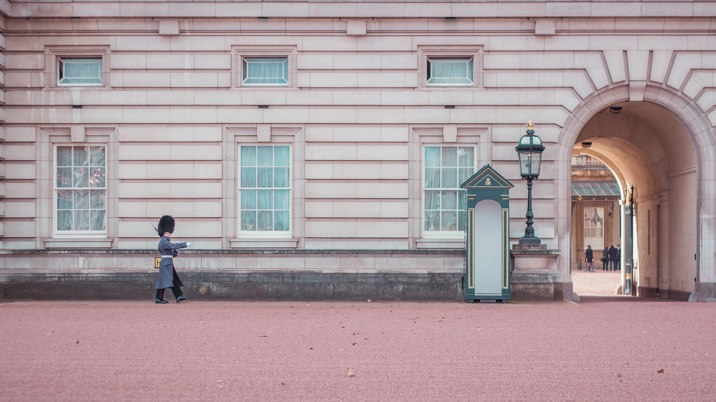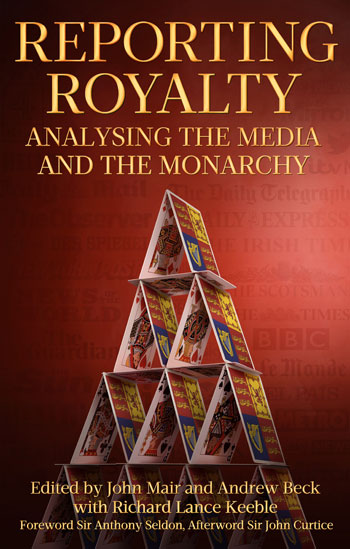
Royal reporting is unlike other specialist journalistic jobs in newspapers. In practically all other areas, you can manage to speak to the principals of a particular government department or most other organisations who can usually easily be approached for quotes. Most politicians make themselves readily available to deliver their words of wisdom to fight their corner. The same can be said for high ranks in the police and the NHS.
‘The Firm’ off the record
But covering ‘the Firm’ is completely different. You cannot ring up the monarch or any other senior royal to ask for a few words on any subject, especially controversial topics affecting the family. There is only one exception and that is on overseas tours where the royal in question usually holds a reception for the travelling press. Here you can get amazing insights by talking to royals. But highly sensitive discussions are taboo and are strictly off the record. But the information gathered can be stored away for another time which gives you great material for future projects.
I was lucky enough to meet all the major royals in my years of covering them and enjoyed and cherished those rare few minutes you get. They are special occasions.
My royal journey
I moved from The Sun, where I was Industrial Editor, to TODAY in 1988 and was soon asked to delve into the troubled world of the royal family. It did not take long to work out that I would be facing a block on information from those who served their royal masters. When I returned to The Sun on the closure of TODAY, I continued to cover the royals.
This was a world far removed from my own, born in Glasgow, living in a tenement in Maryhill, and eventually being asked to leave school as teachers felt they could no longer do anything worthwhile with me. For a time at the start of my royal reporting career, I felt I had bitten off more than I could chew.
The old gatekeepers of the palaces: ‘No comment’
In those days those who worked in the lavish surroundings of Buckingham and St James’s Palaces, and whose job it was to deal with the press, regarded journalists as an irritant. I suspect some still do to this day. Press relations were still in the hands of courtiers, and the daily Court Circular was as close as they ever came to issuing a statement. The palace press office is not there to act in the understood public relations sense. Then it was a hive of courtiers who stage-managed royal tours, helped prepare the anodyne royal speeches, and presented the media with the blandest of faces whenever anything really interesting happened.
In fact, I soon came to believe that these backstage mandarins only knew two words of the English language: No Comment. So, it was back to the drawing board, and I had to learn quickly. I soon discovered that only about half a dozen people close to the royal family could point you in the right direction. It was a steep learning curve. Now I knew the game, I was quite happy at lobbing stories into the various press offices and getting the curt ‘no comment’ reply.
This is why on royal stories, you will always see the ubiquitous ‘source’ always quoted. It does not mean made up; it purely means that you need to grant anonymity to someone who knows what is going on.
How times changed
But things were soon to change when both Palaces suddenly woke up to the fact that they were getting a terrible pasting as the War of the Waleses got under way. The battle between Diana, Princess of Wales, and her husband Prince Charles saw a sea change in the attitude of some of the team who worked in Palace communications. The PR war between Charles and Diana was in full flow and as far as tabloid editors were concerned, it was open season.
It was difficult for the press officers to try to stay aloof from the royal brawling between Diana and Charles, as there were so many ‘friends’ who were prepared to brief reporters, clearly with the blessing of either the Princess or Prince.
Most of what I call the new breed had a track record of working as civil servants in government departments and press offices. None of them was ever going to ring you up and give you a juicy piece of information for your next page lead or splash. That was never their job. It was always my job to find the stories, but now we had a group of people who clearly were prepared to say more than ‘no comment’. They realised that it was important that no comment was no longer going to cut it and that the deference once shown by newspapers to the royal family was gone.
They also realised it was necessary to communicate with the dreaded tabloids, read by the vast majority of the country, and not just toss the odd bone to the likes of The Daily Telegraph or The Times.
The good ‘uns
This is why people like Allan Percival, Sandy Henny, Colleen Harris at St James’s Palace, and Ailsa Anderson and Samantha Cohen at Buckingham Palace all had reasonably good relationships with royal correspondents. They were respected and I like to think that respect was mutual. They usually remained nameless and went by the collective name of ‘A royal spokesman said’.
For most of them, however, they entered a world for which no amount of civil service training could prepare them. Despite that, they all left their mark on the institution. There was only one rule that existed between both sides: if you lie, you will never be trusted again.
Rocky seas meant a new modus operandi
They had a lot of fallouts to deal with during their time at the helm: Diana’s Panorama interview, Jonathan Dimbleby’s ITV interview with her husband Prince Charles, Diana’s tragic death, dealing with the interests of her grieving sons, William and Harry, the problem of rebuilding Camilla’s reputation after her affair with the Prince, and a whole host of other controversies.
Following Diana’s death in particular, there was a new understanding on both sides of the barricades. Tabloid editors sat on stories and photographs they would have rushed into print in the mid-1990s. Likewise, St James's Palace, through events carefully managed, allowed access that would have been unimaginable prior to the demise of Diana.
The tabloid 633 squadron
An example of the old guard not caring much about journalists came in July 1993 when Princess Diana visited Zimbabwe, where the highlight of her tour was helping to serve at a soup kitchen deep in the bush. Her press officer had organised buses to take us to the venue – a SIX-HOUR JOURNEY from Harare and six hours back again. Too long for UK deadlines. When we pointed out that we needed to be able to file our stories and pictures, his reply was, “I am not a bloody travel agent!” Diana herself was flying in and out.
I managed to hire four planes and take most of us to the venue, the only proviso being that we arrive before her and leave after her. It was worth it to see the face of the PR man as he saw us waiting for the Princess as he stepped off the plane.
We felt like 633 Squadron, almost flying in formation, and landing way before the Princess. The job itself screamed into the papers. How could it fail?
Advising the Queen
I have only sacrificed one royal story and that came in 2002 when the Queen made a Golden Jubilee visit to Northern Ireland.
We arrived in Omagh where the Queen was to make one visit, to a local library, her only engagement in the town. I was stunned that no arrangement had been made for her to pay her respects in recognition of what happened in 1998 when 29 people were killed in the Real IRA bombing.
On the eve of her visit, I was in an hotel with some relatives of the victims of the bombing who were getting angrier and angrier at the perceived slight.
It would have been easy for me to leave things as they were and get a great story about the Queen ignoring the Omagh victims. But I decided quietly to call Ailsa Anderson, Buckingham Palace’s Director of Communications, and warn her that the Queen would receive massive criticism that an opportunity to show solidarity with the victims of Omagh was about to be missed. I suggested that she contact then Northern Ireland secretary Dr John Reid, who ironically had gone to the same school as me, to put him in the picture.
The result was officials on the tour realised how bad things could be and quickly fitted in a visit to the bomb site. The Queen spent several minutes listening to Dr Reid's description of the horror, looking up at buildings on both sides of Market Street. One side of the street has been rebuilt, while construction work continued on the other.
Witness to the royal soap opera
I have always regarded the royal family as one huge real-life soap where many scriptwriters would find some of the plots too outrageous even for television. But it is a fascinating subject, and it is the gift that keeps on giving to journalists. Its machinations are one of the cornerstones of news, whether in print or broadcast.
Would I have changed anything – NO! I enjoyed the chase and I hope the current crop of royal correspondents have as much fun as I did.

This chapter was taken from the new book, ‘Reporting Royalty – Analysing the media and the monarchy’, edited by John Mair and Andrew Beck with Richard Lance Keeble, published by MGM Books. Reporting Royalty can be purchased via Amazon.












